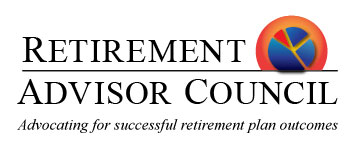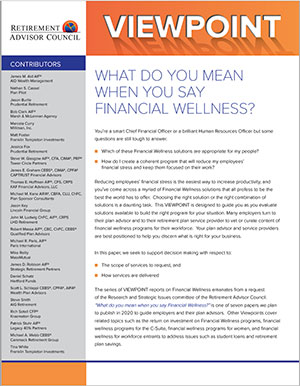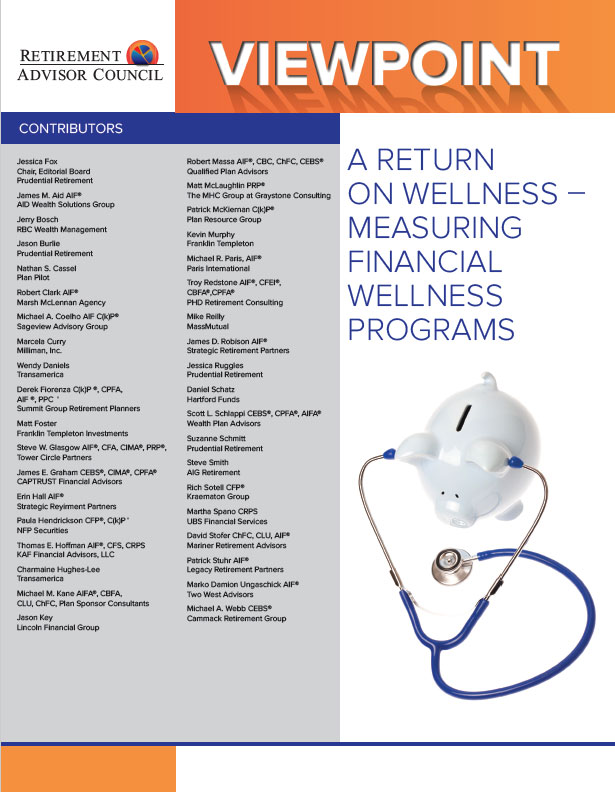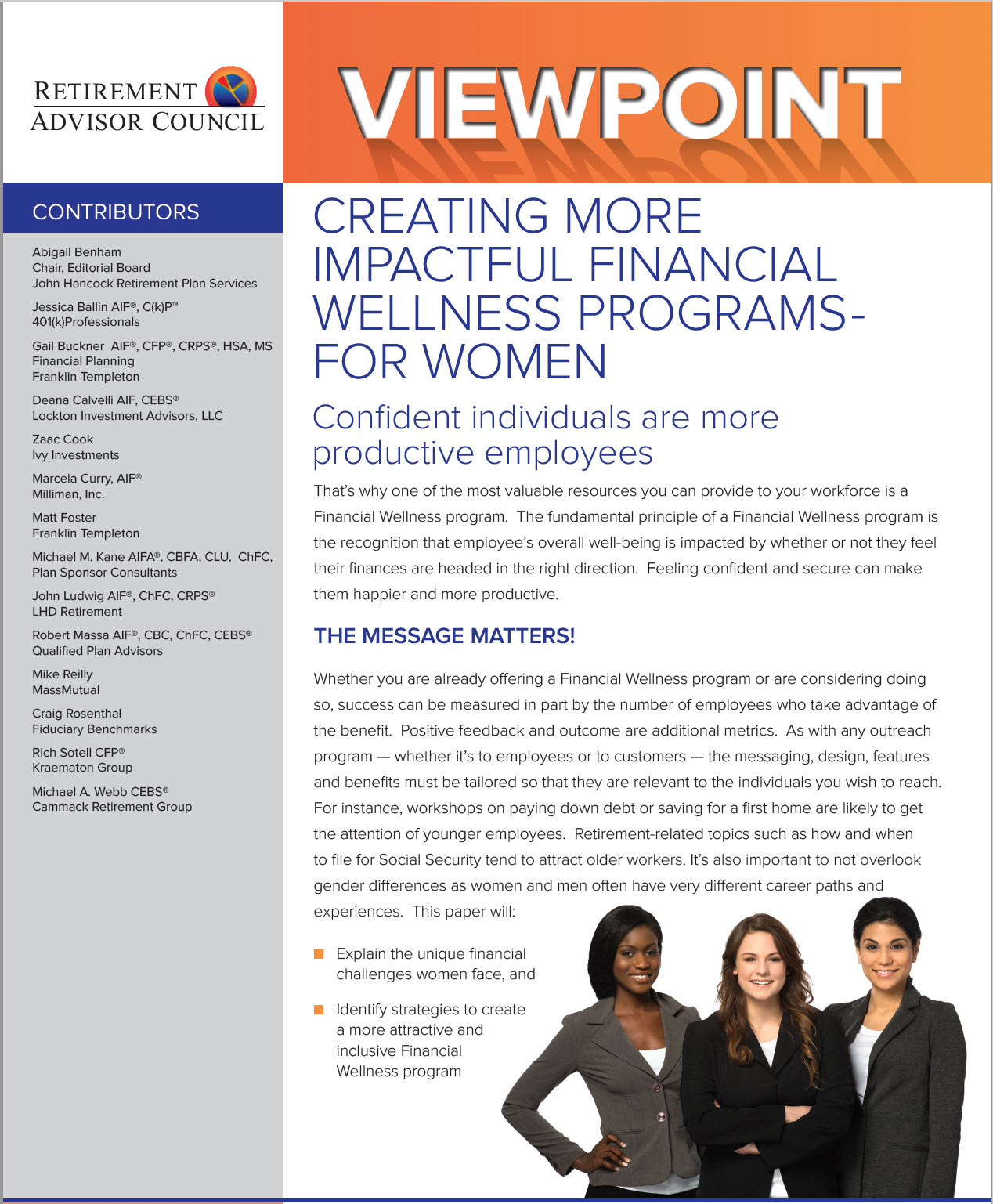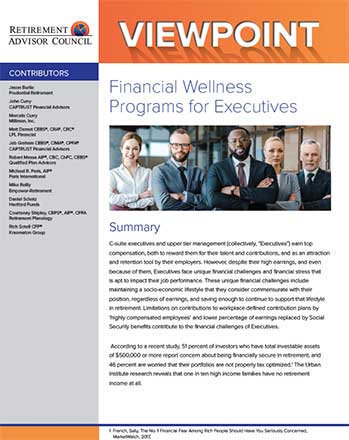Thought Leadership - Financial Wellness
Reducing employees' financial stress is the easiest way to increase productivity. Chief Financial Officers and Human Resources Officers come across a myriad of Financial Wellness solutions that all profess to be the best the world has to offer. Choosing the right solution or the right combination of solutions is a daunting task. This VIEWPOINT is designed to guide the reader through the evaluation of solutions available to build the right program for their situation. Many employers turn to their plan advisor and to their retirement plan service provider to vet or curate content of financial wellness programs for their workforce. Your plan advisor and service providers are best positioned to help you discern what is right for your business. This paper, the first in a series the Council will publish in 2020 seeks to support decision making with respect to:
- The scope of services to request, and
- How services are delivered
For employers considering whether to set up a Financial Wellness program, case studies, industry insights and surveys serve as a compelling case for the value of Financial Wellness program. This VIEWPOINT
* Quantifies the impact of employee financial stress on the cost of labor,
* Provides a case-in-point showing how an 8-year program improved productivity, retention, and reduced administrative costs associated with turnover, and
* Lists metrics to help measure the Return on Investment of Financial Wellness programs.
For employers considering whether to set up a Financial Wellness program, case studies, industry insights and surveys serve as a compelling case for the value of Financial Wellness program. This VIEWPOINT
* Quantifies the impact of employee financial stress on the cost of labor,
* Provides a case-in-point showing how an 8-year program improved productivity, retention, and reduced administrative costs associated with turnover, and
* Lists metrics to help measure the Return on Investment of Financial Wellness programs.
- Maintaining a socio-economic lifestyle commensurate with their position, regardless of earnings,
- Limitations on contributions to workplace defined contribution plans by ‘highly compensated employees’,
- Lower percentage of earnings replaced by Social Security benefits,
- Greater risks of loss and increased personal liability because of perceived “deep pockets”
- Benefits that provide inadequate financial protection
- Greater exposure to fraud and cybercrime.

